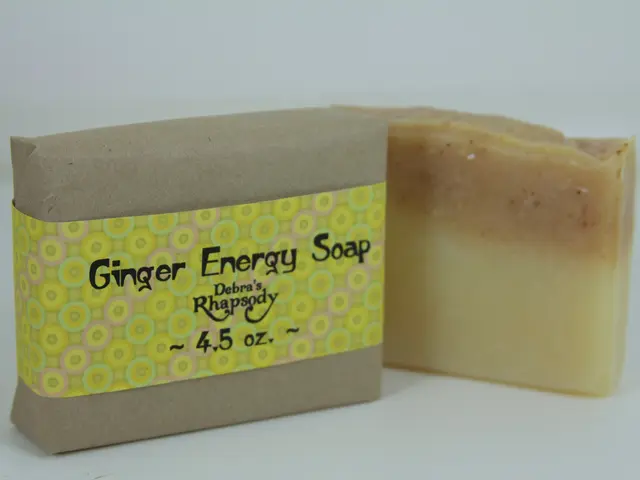Mastering Second-Hand Furniture Shopping: Insights from Pro Vintage Dealers - Tips to Navigate Successfully Their Trade Secrets
Dig into the thrilling world of used, shiny, and historical furniture! Stepping into a thrift store is like taking a journey to a universe full of possibilities. You might leave the store empty-handed, or you might land an antique dresser you'd never dream of affording otherwise - that's the joy of learning how to score big at thrift stores.
Collecting rare, old, and fascinating furniture turns your dwelling into a museum-like haven, enriched with heritage, craftsmanship, and character. But, let's admit it - knowing the ins and outs of thrifting can feel like a mysterious talent - one that combines stubbornness, instinct, and a bit of street smarts. After all, I've spent years honing my thrifting skills, and I'm still discovering new tips and tricks.
To write this ultimate guide, I chatted with some experts to find out everything there is to know, including how to evaluate secondhand furniture and handle restorations. So, let's get started!
Here are someEXTRAordinary tips, straight from the pros:
1. Know Your Terrain
dollar signs
There's treasure everywhere - from the bustling Marché aux Puces in Paris to Kyoto's temple markets. If you're in Europe, motley flea markets are likely your jams (think London's Portobello Road, Portugal's Feira da Ladra, and Athens' Monastiraki).
In the US (much like yours truly), aim for events like the Brimfield Antique Market in Massachusetts or the Round Top Antique Fair in Texas, held thrice or twice a year, respectively.
Don't forget about yard sales, particularly in the Southeastern US where the 127 Yard Sale - spanning an epic 690 miles - takes place every August. Lastly, estate sales can't be ignored.
2. Search for Maker's Marks
Derya Baydur, a Bonhams specialist and head of sales for Modern Decorative Art and Design, insists on conducting a little surf research before diving into the world of thrifting.
"Begin by examining the piece for any signs or marks," she advises. "If easily identifiable, do a quick search. Today's online technologies, such as reverse image searches, can assist in recognizing objects and finding similar examples sold at auction."
Not every item comes with a label, but don't fret - an app can help. "Google Lens' reverse image search function is invaluable, and it's free!" Derya chuckles.
Derya Baydur has spent over a decade working in the decorative arts field. Before joining the pro team at Bonham's, she held roles as Assistant Vice President and Specialist for European Ceramics at Sotheby's and, later, Vice President of Sales and Specialist for the Sotheby's Interiors team e-commerce marketplace, Buy Now.
3. Identify Real vs Fakes
Even if you've spotted a chest of drawers listed for $4,000 on 1stDibs, remember that several factors go into the calculation of vintage items' values. Derya highlights size, condition, authenticity, and provenance as crucial factors that can either increase or decrease an item's value.
Recreations of classic pieces occur, so seeing a treasure that seems too good to be true might be the case. Karen Rigdon, vice president of decorative arts at Heritage Auctions, suggests keeping an eye out for indicators like signatures, maker's marks, construction details, provenance, and materials to help discern the real from the fake.
"Details like type of joinery or tool marks can hint at time periods," she says. "However, none of these alone are 100% foolproof."
Karen Rigdon has devoted 45 years to the decorative arts world, beginning with weekend visits to estate sales in her hometown of Grosse Pointe, Michigan. She earned her Interior Design degree from Michigan State University and has worked for well-respected institutions like the Spartan football stadium's extensive decorative arts collection.
4. Do Your Due Diligence
"Value estimation takes patience - there's usually no quick answer," stresses Karen. If you stumble upon a possible valuable item, she suggests reaching out to a primary auction house like Heritage, which offers category specialists ready to review your piece.
"If it's an item specific to your region, a local appraiser or reputable dealer may help narrow down options," Karen adds.
Derya agrees that getting in touch with the experts is beneficial for gearheads and enthusiasts alike. "Bonhams offers free item valuation, so don't hesitate to submit yours." And, restoration is crucial when you've scored a prize piece from a thrift store. DIY restorations might seem simple enough after watching a viral video, but it's essential to understand the impact it can have on an antique's value.
"Never attempt to restore something on your own without understanding the consequences," Karen cautions. "Even well-intentioned cleaning can cause irreversible harm."
She recommends consulting with someone well-versed in the specific medium, such as a museum curator, specialized dealer, or auction house expert for professional input on restoration techniques. "A priceless work of art or antique furniture can greatly profit from professional restoration," Karen mentions. "The purpose of restoration is to restore the item's condition to its original state."
Derya also champions the auction specialists' expertise when seeking high-quality restorers. "Professional restoration can either elevate or degrade an item's value depending on how it's done," she says. "Remember, restoration aims to return the item to its original state as closely as possible."
5. Shop for What Sings to You
If intensive research is overwhelming, focus on buying items that resonate with your spirit. "Create a collection that echoes your distinct aesthetic and sentiments," Derya encourages. "Appreciate the process of uncovering the item's past, its originator, and its worth. This exploration is what turns a casual buyer into a committed collector."
And, for fun, continue expanding your knowledge by perusing the web's best secondhand furniture sites:
- 1stDibs
- Etsy
- eBay
- Ruby Lane
- Nordlings Antik (Scandinavia)
"Some people have a keen eye, but real knowledge comes from looking, handling, and researching the material," Karen says, reminding newbies to explore reliable resources like the Corning Museum of Glass website, museum visits, and auction preview attendance.
"The Heritage Auctions site boasts a searchable auction archive, value guides, and free auction appraisals," Karen adds. "Lastly, our amazing website provides plenty of resources, like this guide, to help you score amazing vintage finds!"
Have an epic thrifting adventure!
- Seeking treasures doesn't discriminate, whether you're in renowned markets like Paris' Marché aux Puces or Kentucky's marketplaces, or local yard sales in the Southeastern US, such as the 127 Yard Sale.
- Begin your thrifting journey by researching the piece for any signs or marks to identify its origin and value. Online tools like reverse image searches can aid in this process.
- Be cautious of potential fakes when buying antiques. Indicators like signatures, maker's marks, construction details, provenance, and materials can help you differentiate the real from the fake.
- When you believe you've found a valuable item, ensure you do thorough research and consult experts to estimate its worth and restore it properly to preserve its value.
- When tackling the world of secondhand furniture, focus on pieces that align with your unique aesthetic and sentiments. This approach helps transform a casual buyer into a dedicated collector.
- Expand your knowledge and shopping options by visiting reputable online platforms like 1stDibs, Etsy, eBay, Ruby Lane, and Nordlings Antik.
- Nurture your passion for thrifting by relying on reliable resources like museum websites, museum visits, auction previews, and resources offered by trusted sites, such as Heritage Auctions, which provide searchable auction archives, value guides, and free auction appraisals.








